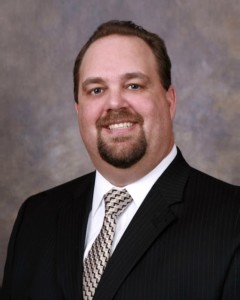 The City of Indian Wells is located in the heart of Southern California’s Desert Resort communities and is recognized for its tranquil resort environment. Christopher Freeland has led the City as city manager since May 2019. With experience in nearly every City department, Freeland worked for the City of West Covina for 18 years, the last 3.5 as city manager.
The City of Indian Wells is located in the heart of Southern California’s Desert Resort communities and is recognized for its tranquil resort environment. Christopher Freeland has led the City as city manager since May 2019. With experience in nearly every City department, Freeland worked for the City of West Covina for 18 years, the last 3.5 as city manager.
How would you describe the City of Indian Wells for those who are not familiar with the city?
For a small community, Indian Wells has a lot happening. Incorporated in 1967, Indian Wells is a small bedroom community (population of 5,400) and a major tourist destination in the heart of Southern California’s Coachella Valley. As a tourist destination, hundreds of thousands of visitors come to Indian Wells each year to relax at our world-class resorts, attend a conference, play golf on nationally recognized golf courses, watch the top tennis stars at the BNP Paribas Tennis Tournament, or compete in the annual Ironman or Margaritaville USA Pickleball National Championships.
Indian Wells is also a very popular retirement community and a place where many of our residents own second homes in another part of the United States or Canada but escape to Indian Wells for vacation or to live the “snowbird” life. Residents enjoy living in a desert oasis that provides the privacy and seclusion they desire while partaking in the numerous amenities the City provides.
Where is your favorite place or space to visit in the City?
I love playing golf, but I am not very good. Nevertheless, I enjoy playing a round of golf with a group of friends at the Indian Wells Golf Resort (Celebrity Course), especially at the end of the day with the sun setting below the San Jacinto mountain range. Afterward, my friends and I head up to the Vue Bourbon Bar & Gastropub to have dinner and enjoy the amazing desert views. Trying a glass of one of the many rare bourbons they offer is also a must.
You worked at the City of West Covina for 18 years where you served in nearly every management role, including Human Resources Director, Community Services Director and Deputy City Manager, before becoming their City Manager. How did seeing different sides of an agency prepare you for taking on the City Manager role?
My first job in West Covina was a Management Analyst in the City Manager’s Office. I had the good fortune to work for City Managers and Assistant City Managers that were supportive of my professional growth. They understood my ultimate career goal was to become a City Manager, so they encouraged me to get involved with MMASC, ICMA, and CalCities, but, more importantly, they challenged me to take on various roles within the organization to better understand the inner workings of a City and to provide me with the tools I’d need to succeed at the City Manager level.
Today, I participate in the MMASC mentorship program. One of the key pieces of advice I share with those wanting to excel in this profession is to always take on new challenges, especially the assignments that no one else is willing to take on. By doing so, you make a name for yourself as the go-to person within your organization that everyone can depend on and it adds depth to your resume. I was fortunate that West Covina provided me with opportunities to better prepare myself to one day be a City Manager.
For aspiring City Managers, I encourage you to learn as much as you can about the operations of the various departments with extra emphasis on finance, human resources and community/economic development. Get involved with MMASC/MMANC, ICMA, CalCities and other professional associations to develop your professional network. Friends I have made through these organizations have supported me during my 20 years in local government and I can depend on them for advice or a favor when needed. Lastly, surround yourself with smart people that have the same values and commitment to the profession that you do.
Indian Wells’ population is approximately 20 times less than West Covina’s. How does leading a small city differ from leading a larger city? How does your leadership approach stay the same?
I don’t find population as the driving factor in one’s leadership style, but rather the characteristics and challenges of the organization. I feel that I have now worked at both ends of the public administration spectrum. For example, West Covina is a full-service city (Police and Fire Departments), with over three hundred employees, financial problems, diverse revenue base, huge pension liabilities and high turnover of senior staff. Indian Wells is a contract city (Riverside County Sheriff and CalFire), with thirty seasoned employees, financially secure, heavily dependent on tourism, with no pension liabilities. Both communities strive to provide the best quality of life for their residents, but both are so different.
In West Covina, my leadership style was more reactionary to address a given crisis situation before moving onto the next one. In Indian Wells, it is the complete opposite, where the City is able to be much more proactive. What remains the same is the passion for the profession, serving in the best interest of the community, instilling trust in local government and having fun in the process.
Indian Wells is known for its resorts and tourist attractions and typically receives around 65% of the city’s general fund revenue from tourism. The City took one of the hardest financial hits of any city in California and yet is also one of the most fiscally sound. How has the City been able to stay fiscally conservative with so much support needed during the pandemic?
Indian Wells is a fiscally conservative community and it was fortunate that the City was in the middle of a two-year budget cycle with projected surpluses each year when the pandemic began. In March 2020, the BNP Paribas Tennis Tournament was the first major sporting event to be canceled in the United States due to the pandemic. Soon thereafter, Coachella and Stagecoach Festivals were also canceled. These three signature events generate a majority of the City’s annual General Fund revenues. Within days of the tournament’s cancellation, staff provided the City Council with a revised two-year budget that predicted the pandemic would have long-term fiscal impacts on the tourism industry and the City. Like other cities, we froze discretional spending, paused capital projects and reexamined funding priorities. We also had the luxury of a general fund surplus in both years.
By absorbing the surplus and taking immediate action to cut operational costs early, the City significantly lessened the financial losses due to the pandemic. This fiscally conservative approach existed prior to the pandemic, which allowed the City to build strong reserves that are also helping the City manage these tough times.
In what ways does the City continue to plan for the future and embrace forward-thinking financial planning?
Having recently been ranked as the 5th financially sound city in California by the State Auditor’s Office, Indian Wells takes immense pride in its reputation as a fiscally conservative community. I wish I could take credit for this ranking, but this represents years of commitment by City leaders to pay off all pension liabilities, eliminate all City debt, use one-time revenues for one-time expenses, constantly forecasting what the City’s revenues and expenditures are anticipated to be over the next decade and taking action when the City can reap the greatest financial benefit. This is a culture in Indian Wells that begins with the City Council and staff but is embraced by the community.
The pandemic has shown that no matter how much planning Indian Wells does, the tourism industry is much more volatile than we believed. Moving forward, the City is seeking to reduce our dependency on TOT and diversify our revenues through economic development opportunities on the remaining undeveloped land in the City. In addition, the City will begin to see a repayment of former RDA loans in Fiscal Year 2021-22 that are being committed to pre-pay future pension liabilities and other projects to reduce ongoing operational costs.
What initiatives or programs are you focusing the City’s efforts on for the remainder of 2021? What are you hoping to accomplish this year?
Currently, we are in the process of updating the City’s General Plan, analyzing the feasibility of an Enhanced Infrastructure Financing District (EIFD), designing a 100-unit affordable housing project, conducting a Golf Resort Master Plan, adopting a new two-year budget and reviving a new resort project that was canceled when investors pulled out due to the pandemic. It is going to be a very busy year and I am fortunate to have a strong and dedicated staff committed to each of these projects.
If you’re a city manager in California and are interested in being featured in a PublicCEO Q&A, please reach out to PublicCEO Editor Alexandra Applegate at alex[at]publicceo.com.






